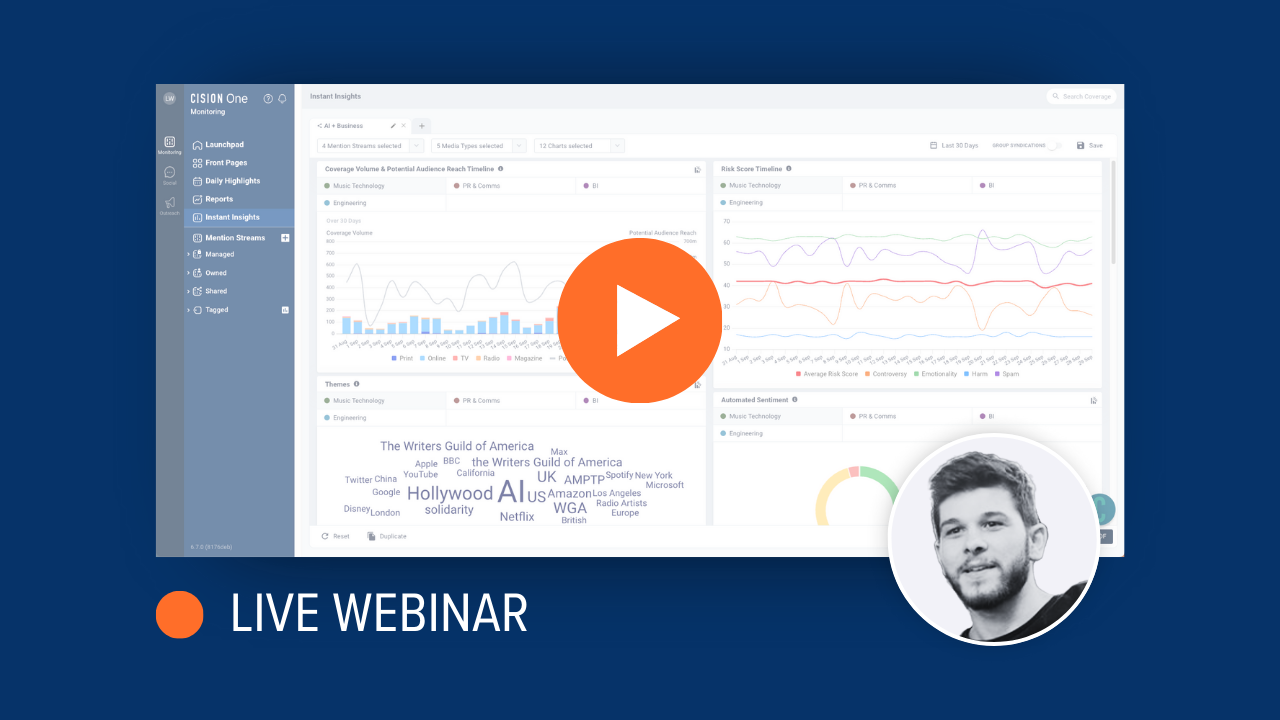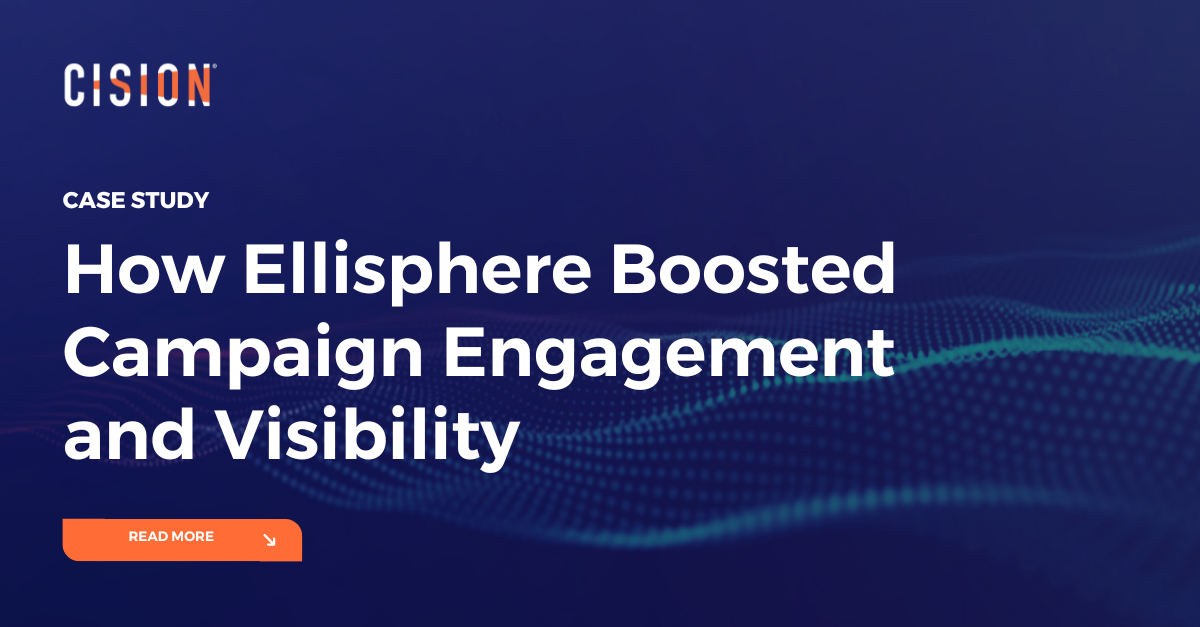
Pictured (l-r): Timo Thomann-Rompf, Johna Burke and webinar moderator Scott Newton
Comms professionals should embrace new AI and machine learning technology, rather than fearing it will take their jobs, AMEC global MD Johna Burke argued in Cision’s latest webinar.
She looked to assuage any PR professionals who are worried by any imminent disruption by AI, stating that human critical thinking isn’t likely to be replaced by automation anytime soon.
Burke said: “AI isn’t really there yet. We’re at more of a machine learning phase of that journey. You look at companies like Facebook who are spending millions of dollars to get to the machine learning stage and I’m still horrified when it tags a picture of my mother as me!”
She was joined by Cision Insights COO Timo Thomann-Rompf, who agreed that fears over the impact of AI in earned media measurement were currently unfounded.
“Machine learning and AI are buzzwords, used everywhere, but at the moment they’re more of a ‘little helper’ to help enhance what we do rather than big, disruptive technology,” he said, adding, “we wouldn’t be very smart to create new technology which would end up replacing us!”
The pair went on to discuss examples of how new technology was aiding industry professionals, how PRs can keep up with technological advances and warned that matching PR goals to organisational objectives is still a necessity in the industry, no matter how much help new innovations provide.
Smart personas
Attributing who actually read an article is one of the challenges which has perennially faced comms professionals. Thomann-Rompf visualised this by using Lasswell’s Communication formula: who, says what, in which channel, to whom, with what effect.
AI and machine learning means that the communicators are finally gaining the ability to answer the “to whom” and “with what effect” points, which previously held back their ability to demonstrate their value.
Harnessing tracking technology used by advertisers, Thomann-Rompf noted that Cision’s AI powered analytics software is able to assign personas to readers of earned media coverage, identifying information such as age, gender, employment and level of household income.
“While that initial persona is interesting, what is even more interesting is when you use that data to build your next campaign,” he said. “When you identify and build personas for your next campaign, we have software which will identify the best journalists and influencers to pitch and which topics to focus on.”
Aligning goals with an organisation
Continuing on the theme of attributing value to earned media output, Burke warned that while the data and software available meant that communicators have never had it so good, it was a waste if they were unable to set goals which aligned with organisational objectives.
“So many times everyone is so excited and too hasty in wanting to get started that they know the tactics which need to be in place and go right into implementing them, rather than taking a holistic view,” she said.
Burke noted that this often leads to teams using “low-hanging fruit style metrics” such as impressions, which aren’t attributable to business goals.
She also cautioned that the use of data cannot be retrospective, adding: “They key is to use the data available as an indicator of performance throughout a campaign. It’s no longer a ‘rear-view mirror’ system and that’s where the speed of AI will really come into play.”
Communicators must keep learning
With technological change in the PR sector gaining pace, communicators might fear that they will be left behind by these advances.
Burke noted that part of AMEC’s role is to educate communicators about advancements in measurement technology, including through its Measurement Maturity Mapper and its Integrated Evaluation Framework.
Rather than debating whether communications is an art or a science, she argued, it was inherent on communicators to continue to learn about growing industry trends and how they can enhance their PR output.
She warned: “The minute people get sedentary and set in their ways and stop learning about developing technology and what the implications are across the board for their organisations then that will be the death of communications, rather than understanding the dynamics and split between the art and the science.”
Machine learning hones sentiment analysis
Thomann-Rompf also identified the use of machine learning in sentiment tracking as a key advancement in analysis. Currently, the industry looks at certain trigger words to identify whether an article is positive or negative, without taking the article’s full context into account.
He used the example of a sentence which praised Bayern Munich and criticised Manchester United. Using standard sentiment tracking would define the sentence as neutral, given that it contained a similar amount of praise and criticism.
Machine learning technology, Thomann-Rompf noted, would identify that Bayern Munich and Manchester United were different clubs and would categorise the Bayern Munich mention as positive, with the Manchester United mention correctly identified as negative.
He added: “The beauty of machine learning is that we can train the machine can be defined specifically for individual clients. If Manchester City was our client, we can train the system to identify ‘failure’ and ‘Manchester United’ as a good thing.”
Watch the webinar on-demand
About Alister Houghton
Alister writes about the PR and comms industry as content marketing manager at Cision. Send press releases, interview pitches, Inside the Campaign/PR case study examples and thought leadership pieces to alister.houghton@cision.com.
Learn More. Do More. demo new
PR Tips, Case Studies, and Product Updates

[On-Demand Webinar] The Next Generation of Media Intelligence: From Gorkana to CisionOne
Explore CisionOne, a revolutionary media intelligence platform, and the evolution of Gorkana. Learn key features and strategies from Luke Williams, CisionOne Product Marketing Manager. Elevate your media outreach to new heights!


